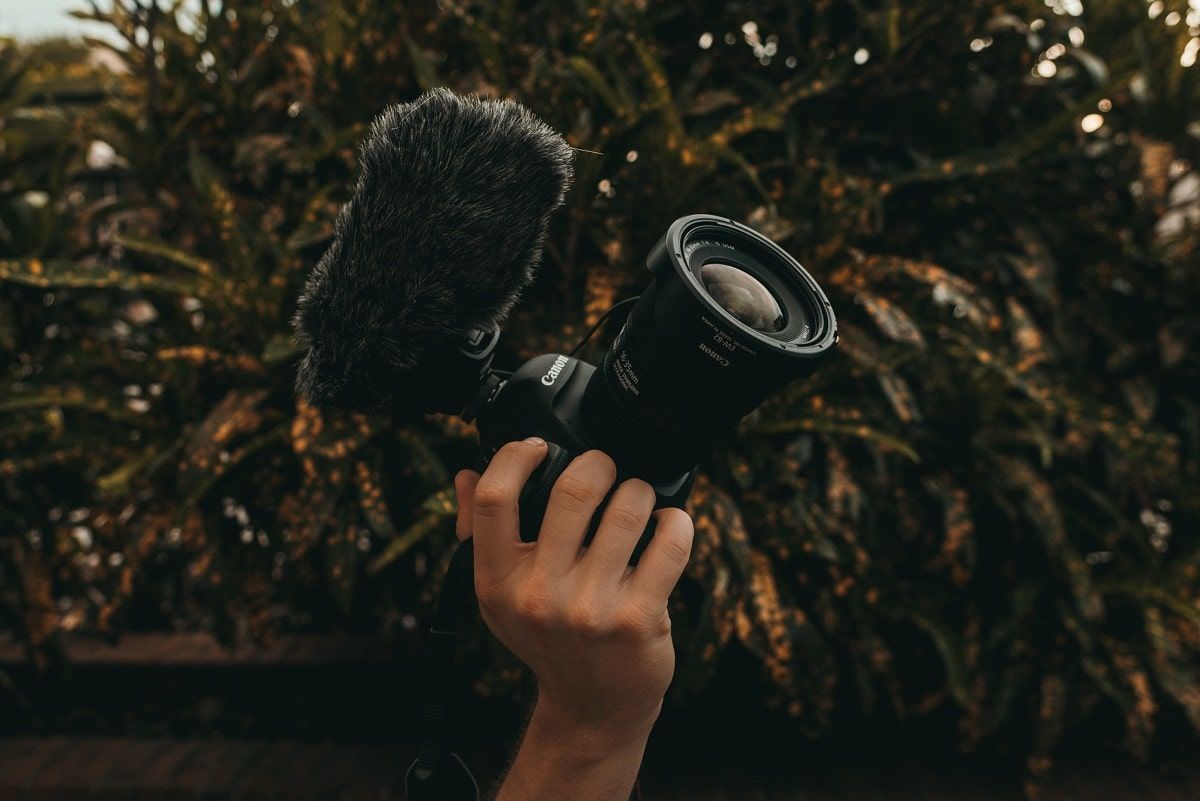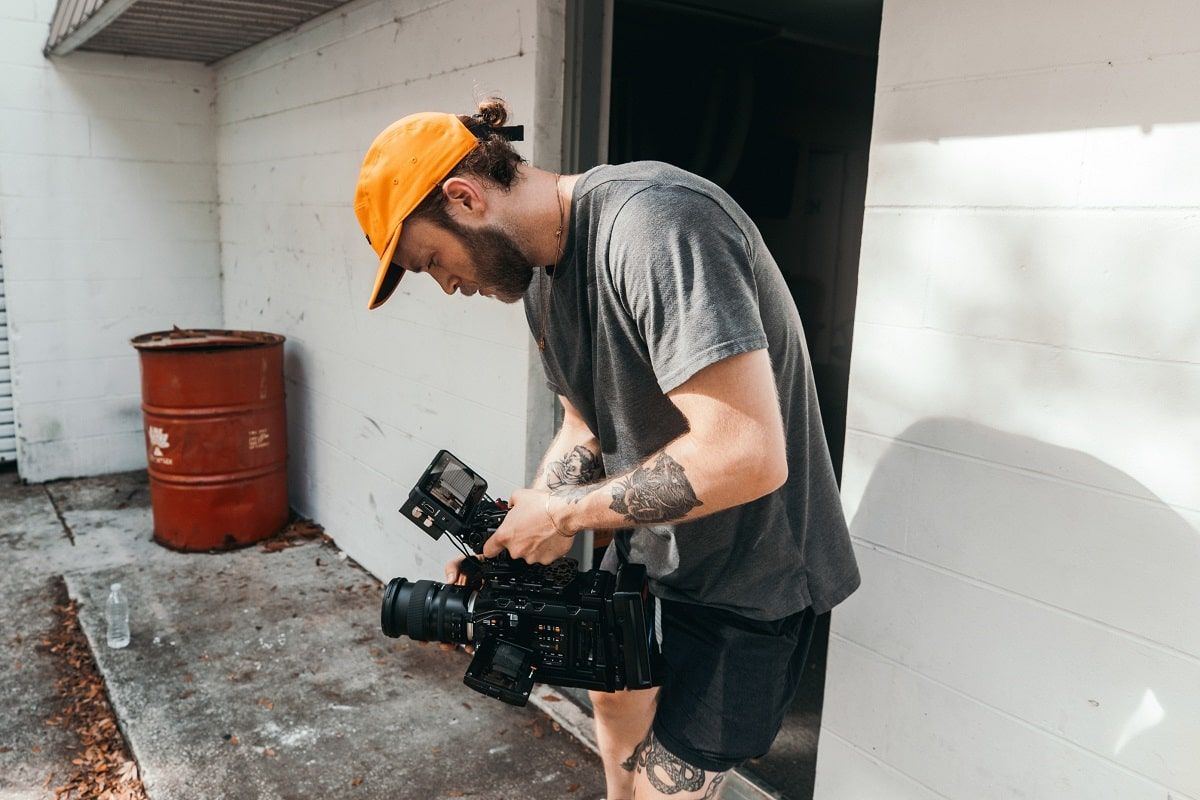Conveying Emotion Through Cinematography? Here's How
Hire film gear from local filmmakers.

Hire film gear from local filmmakers.
When working in or learning about film, one of the most important things to grasp is how to make your audience remember your production.
Many times this isn’t through that one obscure technique you used, but how your film made your audience feel. Keep reading to learn some tips on evoking emotion in your production.
How light conveys emotion in film
As a primarily visual medium, film relies a lot on light to evoke emotions. If you’ve read our article on film lighting, then you probably have an idea about how integral it is.
Using low or high key light and high and low contrast can create a variety of different effects. Low-key lighting with a lot of contrast is great for evoking fear, anxiety, and suspense. (It’s also great if you’re going for the film noir look.)
You can also colour your light or add slight hues to adjust the mood. Adding cooler blue tones over your lighting will make the scene seem solemn and sad, whereas adding warmer hues will make it seem happier.
Finally, the direction and angle with which you approach your lighting can have massive implications on how your production looks. For example, lighting from below can create mystery and suspense.
Lighting from head-on to create fewer shadows will make your subject appear more calm and trustworthy. (See, it’s not as difficult as it seems!)

How film sound affects the emotional state of the viewer
Sound is absolutely key in conveying emotion in film. A filmmaker needs the right skills, creativity, and attention to evoke the right emotions through sound. Having the right sound or even no sound helps make a film that stays with the viewer.
You can use sound effects to immerse your viewer.
A normal scene of a man sitting on a bench will become cheerful if the sounds of passing chattering families or children are heard from afar, or it can become suspenseful if we hear the sound of thunder in the distance.
Scenes have the power to evoke many feelings and emotions depending on what the audience hears in the background.
Dialogue is also a simple way of introducing sound into your production. The way that two or more characters interact with each other will determine the mood and outcome of the scene.
Calm emotions come forward when characters speak slowly and clearly together, whereas shouting or screaming evokes tension and fear.
A deliberate and powerful way of tapping into your audience’s emotions is by using soundtracks and music. Because in reality (sadly), we don’t have music accompanying everything we do in life, the use of soundtracks helps transport the viewer into your production.
Think how the battle ballad in The Lord of the Rings makes you feel adventurous and how an upbeat pop song makes you think that anything is possible.

How camera movements creates emotion
Pan and tilt
This is a commonly used camera movement, so you’ll want to get acquainted with it. You can use a tripod to achieve these shots, and what they usually do is show more of the scene than the objects or subjects.
It may help reveal landscapes or allude to something just outside of the subject’s line of vision.
Pan and tilts can also be used to follow our subject through the scene, either intrusively or non-intrusively. In one instance, we should feel a part of the scene, and in the other, we should feel as though we are eavesdropping.
We get two very different effects here. The speed also affects this; a slow pan gives a sense of calm and relief, whereas a faster one (A whip-pan) gives a sense of excitement.
Static shot
Sometimes, enough can be said about a scene without moving the camera at all. This helps the audience focus on the characters and action without worrying about where they stand in the scene.
Zoom shot
This is achieved by using a zoom lens, and the focal length is adjusted to give the illusion of a moving frame. The perspective doesn’t change here, which makes this different from a dolly shot.
This creates different effects which allow us into the minds of characters or makes characters seem big and impenetrable. A faster zoom (snap zoom) can be used for comedic effect or to add drama to your production.
Tracking, dolly, and crane shots
This is where we are deliberately following something in a scene. Tracking involves moving the camera side-to-side, dolly moves the camera front and back, and a crane moves up and down.
With tracking, the shot size remains the same, whereas, with panning, it may differ depending on perspective. (Try not to get the two confused!)

How camera angles and frames help convey emotion in film
Eye-level
This can be the most simplistic angle you can use and also the most effective. It creates feelings of normalcy and is especially great when followed up with another angle (keep reading on to find out!)
The dutch angle
This is where the camera is placed off-kilter in a scene, and the horizon’s angle is off by at least 30 degrees. This gives us the feeling that something is off. Think about the moment before a jump-scare in a horror movie or when a character is drunk, and their mentality is disturbed.
Point-of-view
This positions the audience in such a way where they can see all that the subject is seeing in a scene. This way, they get a first-person perspective and can empathize more with that character.
High angles
High angles are commonly used in a scene to show the smallness or inferiority of a subject. This literally forces the viewer to look down upon the subject.
Low angles
Like High angles, low angles are used to enforce perspective on a subject. Low angles show power or dominance in a subject and force the audience to look up to the subject.
Learn all the essential cinematography techniques
Now that you’ve got an idea of what emotions you want to convey and how to evoke them, you should begin to learn more about the essential techniques in cinematography.
After that, have a gander on our page about filmmaking so you can put these emotions into action.
How to Convey Emotion in Film FAQ
How can I convey emotion in film?
There are many methods to evoke feelings and emotions in film. You can manipulate light and sound or use some specific camera movements and angles to get that right tone you want.
How do filmmakers manipulate our emotions?
Filmmakers manipulate our emotions implicitly and explicitly in film to immerse the audience into their production.
The examples explained above are just some of how filmmakers might approach this manipulation.
What are the major emotions presented in film?
Many complex and simple emotions are presented in film, but you will commonly find yourself feeling happy, sad, angry, and fearful, amongst a plethora of other feelings you will find in film.






















